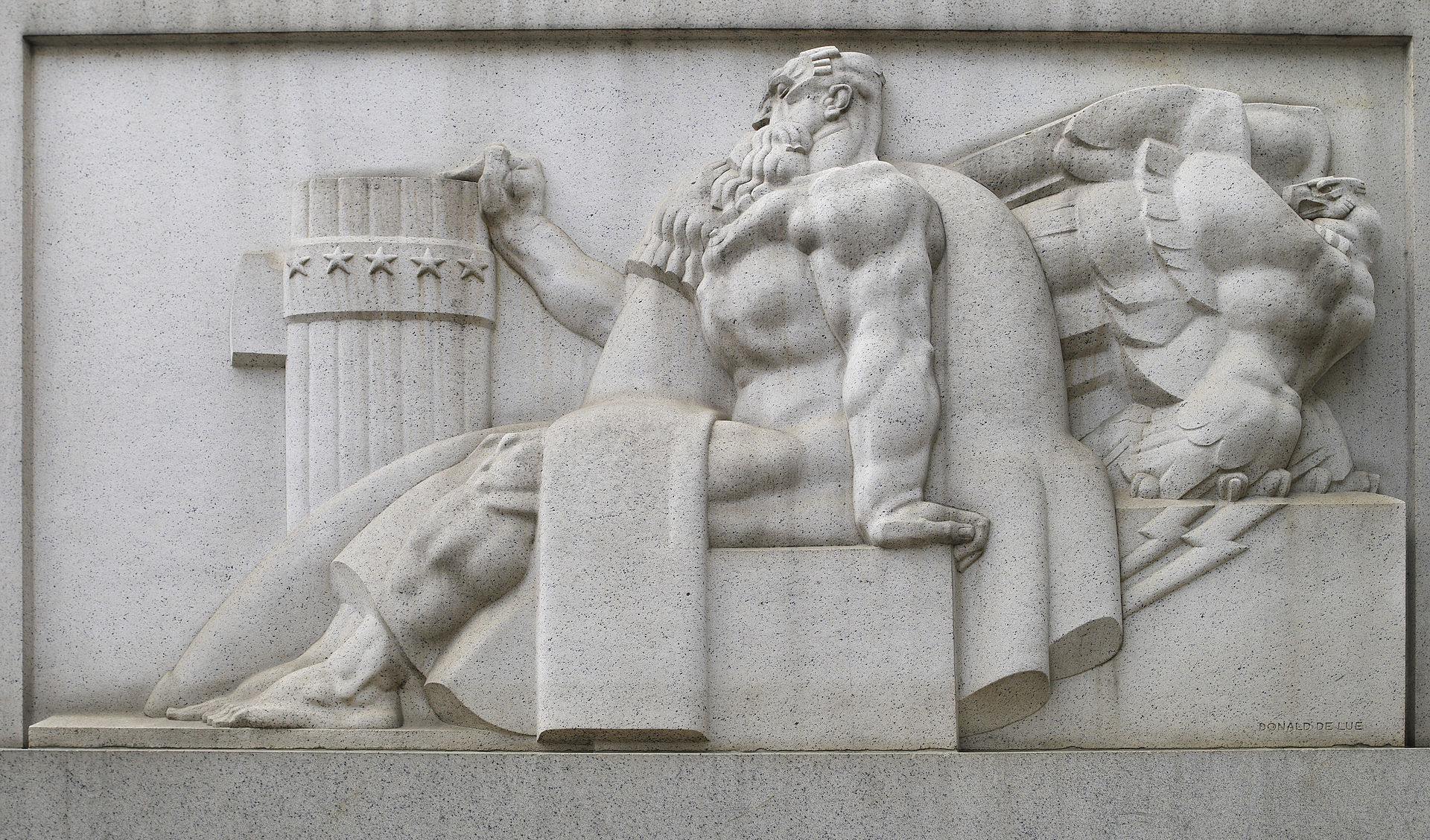The proposed executive order announced by the White House, “Making Federal Buildings Beautiful Again,” has ruffled architectural feathers, according to a New York Times article. I haven’t read the order but it appears that it would make classical architecture the default style for federal buildings. Until about the 1930s, that was the de facto situation: virtually all federal buildings such as courthouses were classical. At that time there was no formal mandate—it was simply what most people, including most architects, felt was the right thing to do. The old federal courthouse, now the Nix Federal Building, on Chestnut Street in Philadelphia, is one of my favorites. It was designed by Harry Sternfeld in 1937-41, in a stripped classical style influenced by his Penn teacher, Paul Cret. You know it’s a courthouse and not an office building because of monumental limestone facade and the bas-relief panels (above) at street level. Of course “classical” covers a multitude of styles—Greek Revival, Beaux-Arts, Federal, Georgian, and what Cret called New Classicism. The challenge of modernism is that it covers . . . almost anything. The result is that you get courthouses that look like corporate office buildings and atrium-equipped government buildings that resemble casinos or upscale resort hotels. Or real clunkers like the FBI Building in DC. The Times’ article quotes modern architects invoking “freedom of expression” in regards to the executive order, which is not very convincing since modernism has traditionally been extremely close-minded when it comes to expression, i.e. there’s only my way.

"Law" by Donald de Lue

Paging Albert Speer
Speer’s version of stripped classicism was influenced by the American WWI memorials that he had seen in France and Belgium.Stripped classicism was common in the 1930s and actually originated in the US. Many WPA projects were in this style. Incidentally, classicism was FDR’s favorite style–he used it in the buildings he designed at Hot Springs.
One may not admire classicism, but it really has nothing to do with politics; it was used by the Borgias, Renaissance popes, German Lutherans, British Protestants, and the American Founding Fathers.
I admire classicism very much, and this country has a multitude of satisfying statehouses, train depots, and banks to recommend the style. The stripped classicism of the thirties I always associate with Mussolini, unfairly perhaps, but the many government buildings in that style seem grim and oppressive, even our own oddball Oregon capitol. And there’s no getting around the fact that authoritarians seem to have preferred some version of classicism as an extension of conservative politics. Speer’s plans for Berlin embodied a very different spirit than Wren’s St. Paul’s or the best of Federal D.C., for all that they can all be lumped together as classical.
The hideous FBI building is not awful because it’s modern. It’s just an awful building very much a product of its time and function. Had it been clad in pillars and pediments I suspect it would still have failed to represent the enlightenment ethos that we have come to associate with the Federal style.
Merely cladding the FBI building in pilasters and pediments would not have made it a classical building. Architectural classicism is as much about the conception and planning of a building as it is about the fine details of the elements. The FBI building is a bad building because it exemplifies the worst failings of architectural modernism.
Quite true. In 1923, Le Corbusier published an article, later incuded in Vers une architcture, that he titled “Eyes that do not see.” He was referring to the fact that people could not see that steamships and bridges and grain elevators had architectural form. Today, people no longer “see” classical buildings–they are all simply “Fake Roman Temples” according to the crude NYT headline.